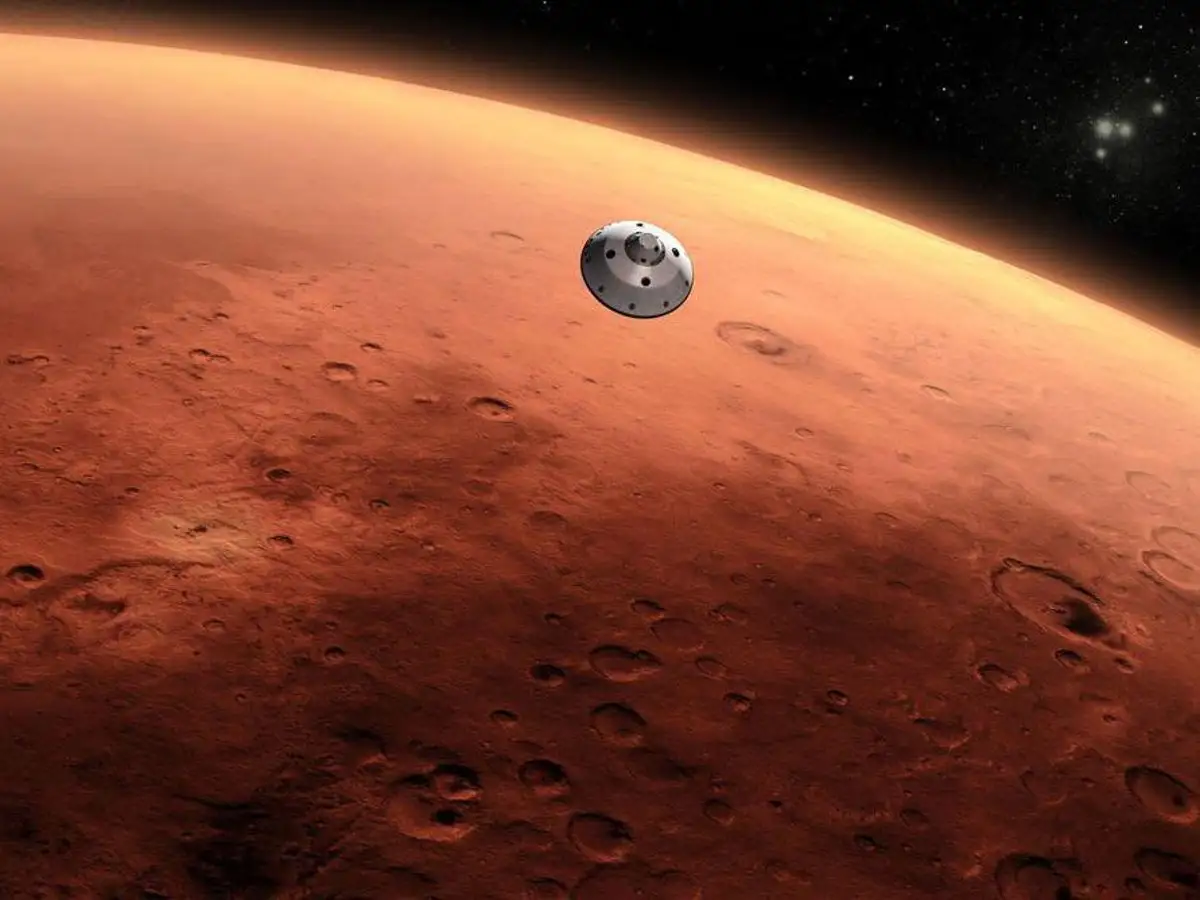Spending any resources trying to colonize another fucking planet, while we continue to render ours uninhabitable is so fucking stupid. How about we re-learn how to live in balance with natural systems here, and then try and terraform another planet from scratch?
To me, colonizing another planet is not about expanding or moving the human race somewhere else. It’s a backup plan. Right now, our entire species exists all on this one planet. There is a non-zero chance that we could all be eradicated in an instant by a sufficiently large asteroid or comet, or by nuclear war. There is no backup for the human race or any other species on earth. Once we have a colony, we greatly increase our likelihood of surviving the end of the world. I think that’s worth investing in, and we should bring as many species with us as possible. For all we know our planet may be the only oasis of life in the galaxy or even the universe. Didn’t you think we should have a backup?
You left out eradication from climate change or biodiversity loss. Not instant, but an even less zero chance. Quite likely, in fact.
Do we actually know how to build a self-sustaining colony? Last I heard, we still had fundamental science and engineering questions to be solved even if we suddenly had an unlimited budget.
Things that come to mind include building a sustainable closed ecosystem, figuring out a long-term power source (is there uranium on Mars? Nuclear reactors run for a long time, but we can’t rely on fresh fuel rods being shipped from Earth), and planning for enough industrial base that things like mining the necessary uranium, digging tunnels, housing construction, etc aren’t colony-ending problems.
Yes, all of those challenges are excellent reasons to be pursuing colonization.
Solving these problems however will directly benefit us here on Earth. Figuring out a closed sustainable ecosystem with a long term power source would have huge implications for technological development.
The same argument existed since the beginning of space exploration, if we, as a species would have heard those arguments, we wouldn’t have satellite today, and all the other advances space exploration brought.
We haven’t tried to colonize anywhere though, and arguments against colonization are still relevant. The advances you mention all happened without attempting to colonize anywhere.
we have permanent habitation in space tough, and an absurd load of scientific advance has been made in the ISS.
I once met someone who said that it’s a pipe dream to think we could have equality between races before we had equality within the same race, and that we should make sure that there aren’t any poor white people before we start worrying about PoC.
These two projects build on each other. Furthermore, each has a minimum time that no amount of researchers working together can push us below. To say we shouldn’t do one because we haven’t done another only serves to reveal your ignorance.
Hey I like SciFi too, but we have pressing issues right here on the only planet we know for a fact that can support life. If we get that fixed, we have until the sun explodes to figure out terraforming other planets. The bottom line is that one issue has a looming deadline, and the other does not. It’s a misallocation of resources to entertain the latter before solving the former. Reminds me of a Vonnegut quote I read the other day: “another flaw in the human character is that everybody wants to build, and nobody wants to do maintenance.”
Of all the resource- wasting human activities, why should we cut spacefaring? Can’t we start by dismantling AI, cosmetics, golf courses,… and then if some last minute precious resources are needed we can talk about not going to space?
I’m all for cutting that stuff too.
I am always happy to see people that haven’t lost hope. I hope you enjoy your life 💜💜. No sarcasm.
Cheers, Santa!
Trying to raise a child before retiring is stupid for the same reason. Yet here we are not waiting to organize our lives into serial convenience.
That is not comparable. It’s more like shopping for a new car while the one you’re in is veering towards the cliff edge.
But how is that going to bolster the fragile egos of some delusional billionaire techbro narcissists?
Tank tank tank tankies guna tank
“Travel to Mars*!”
*Some shrinkage may occur.
Like a frightened turtle.
I WAS IN THE POOL
its just too cold alright?
In the 1990s solar flares were a known problem we’ve yet to solve. Without the earth’s magnetic field or eleven feet of concrete, a CME bakes astronauts crispy golden brown.
With the moon shots, we just timed them with solar minimum and hoped to get lucky. But instead of a couple of weeks, a mars shot is nine months in space. So we’re going to need some new materials with which to make our crew compartments CME proof.
And this is one of hundreds of problems we need to fix before we can send people to mars. It’s going to be a while.

He has such rosy cheeks and healthy radiant complexion

Alien
How about eleven feet of concrete?
That’s why I think Venus is in some ways easier than Mars. It’s got a magnetic field just like Earth which offers a ton of protection from radiation. Of course, cloud cities are a completely different challenge though.
Can we not do the whole the rotat8ng ring artificial gravity yet?
Like. Why are we not doing this? Can we not do this?
If you haven’t noticed, the space stations we do build require international cooperation and are basically just a bunch of rocket sections stuck together. The ISS, in all of its glory, took years to assemble and has some serious design constraints.
A project of that magnitude would require lots of highly specialized parts to be launched into orbit first, or, we somehow manage to build an entire fabrication facility in orbit where it can process raw materials.
The concept of a rotating ring is simple. Developing the means to build it is hyper-complex.
You don’t have to build a whole ring. You just need a boom and a counterweight.
I guess the hard part would be that a truncated-circle-sector-shaped room is more awkward to launch than a rocket-section-shaped one of equivalent usable space. (Also, you need a tube and a ladder down to a docking port at the center of mass, because spaceships can’t line up with a target swinging through an arc.)
You climb up to the center, not down.
We definitely have the resources and aptitude to accomplish all of that. It’s just that our leaders would rather spend it fighting each other instead.
basically just a bunch of rocket sections stuck together. The ISS, in all of its glory, took years to assemble and has some serious design constraints.
Station Alpha intensifies
Not THAT complex. They already have several prototypes they’re planning on testing. They won’t be giant rotating stations, but rooms of a few meters across. It doesn’t take much rotation to get useful amounts of g’s.
Not THAT complex.
How hard could it be? It’s not like it’s rocket science or anything.
Yes, literally already being worked on. By rocket scientists.
You can get spin gravity from two starships rotating around one another while linked by a cable.
Or two of any ship. But starship’s the only one being discussed for mass production and in-space operations.
Moon factory, rail gun
I mean it sounds simple, obviously doing that we be a ton of work, but it seems very feasible. And doing that would be an incredible starting point for space industry. From there, we could send out automated probes to capture trojan asteroids from earths orbit and launch them into lunar orbit for collection. We could even put them in a non stable orbit that bleeds off orbital speed and eventually they bleed off enough to land while staying in almost one piece depending on the type of asteroid.
How do you bleed orbital speed around a body with no atmosphere?
Hmm… yes.
There’s got to be a way to take advantage of tidal locking mechanisms, but artificially accelerated in pace, using a satellite that can alter its own spin, to alter that satellite’s orbit.
There’s got to be. Two bodies in orbit are in contact and should be able to act upon one another to arrange themselves with regard to one another.
My gut is telling me there’s a way to do that.
Well, despite my blunder, my original thinking was that unstable orbits do exist, and you would in theory be able to bleed of orbital speed. The issue is that that orbital speed would be converted into potential energy without an atmosphere.
It would be much more long term but we could make a space tether in orbit of the moon. As asteroids are flung to the moon it could catch them and gain angular momentum as the asteroid loses speed. We’d just have to find a way to bleed that angular momentum. It could be for return packages to earth, but with the rail gun already in place, that seems somewhat useless.
On the other hand, it would be difficult to aim the rail gun, whereas the space tether would be somewhat easier to aim.
It could be for return packages to earth, but with the rail gun already in place, that seems somewhat useless.
On the other hand, it would be difficult to aim the rail gun, whereas the space tether would be somewhat easier to aim.
In this scenario, we’re just missing powering the rail gun self-sufficiently for a tidy operation. So a method to convert that angular momentum into electrical power for our rail gun would be the final step I think.
Fly wheels, gears, electrostatics in the tether. All equally undeveloped at scale as our tether except in principle so maybe the tether makers in the scenario already had an idea in mind.
The question is…will they settle on a steam turbine in space somehow lol?
No, we can’t actually. That’s why it isn’t done. It’s science fiction, even if the math checks out.
A space station with artificial gravity would be a good project, rather than sending a man on Mars just to take a selfie.
There’s no real technical reason why we couldn’t do it. The main component lacking is political will
“You can’t protect them from galactic radiation using shielding, but as we learn more about renal biology it may be possible to develop technological or pharmaceutical measures to facilitate extended space travel.”
I wonder why
If you’re asking about the shielding, probably the mass required for materials that are generally used for radiation shielding. If the craft is built terrestrially, the amount of energy necessary to launch would be insurmountable with current chemical rockets.
Now, if the craft were manufactured in space (and forming of the shielding materials were practical in low-G), the problematic materials could be shuttled up over time, making it a non-issue. This would, of course, also mean that the craft could not be used for re-entry and would require landing craft. And there’s all the logistics challenges (supplying air, etc). Probably though the direction that will be necessary for long-distance space craft.
That’s seems a lot different from “can’t be.”
Yeah. I think that they are simplifying a bit. For practical purposes, for the foreseeable future, it is a “can’t be”. There is a lot of work and research that would be necessary to get an orbital shipyard in place. As someone else mentioned, the current state-of-the-art space station is effectively little more than rocket body segments with extras (solar panels, etc).
It’s much easier for me to say “this is what we would need to do” than to actually do it. We have the technology to build a space station. We don’t currently have proven technologies to refine, cast, forge, and extrude metal in microgravity and hard vacuum. We don’t currently have proven technologies to manufacturer space craft out of components in microgravity and hard vacuum. And those are just a handful of the necessary things that we know - there are a bunch of unknown unknowns.
So, technically, yes, it isn’t a “can’t be” but, at this time, it may as well be.
My company worked on the ISS (what’s now my team did the electrical power system software), and there really was more to it than that. The way you word it sounds like they took spent boosters and converted them into habitat modules, but that’s not at all the way it was. Each element was designed to be brought up in the space shuttle bay and assembled in space (it’s the reason for the shuttle’s existence). We know how to assemble stuff in space, it’s just expensive.
Assembling premade components is one thing, I think he was talking about actually making stuff. If we want effective shielding, that’s a lot of mass, so it would be much easier if we could find it already up there
Maybe if you were going to try to mass produce up there, but the mass of the equipment needed to mine and smelt ore and roll it out into plating would be way more than the mass of the plating for a single vehicle. And that’s not considering capturing an asteroid and bringing it into orbit.
Definitely oversimplification and I don’t mean to understate the efforts, technology, engineering, and materials that went into the ISS. It’s incredible. My main point being just how simple the current state-of-the-art is compared to what would be needed for a sustainable orbital shipyard.
We know how to assemble stuff in space, it’s just expensive.
Indeed (ISS being a good example of this fact). The scope here though is beyond just assembly. Also, at minimum, manufacturing of shielding components would likely be necessary in order for such an undertaking to be feasible.
Also means that you have to haul all that shielding to Mars and back, so some combination of bigger engines, more propellant, or just go slower
That’s the benefit of setting up a permanent orbit for transit. You could make a much bigger ship with more shielding and more comfort for a long haul, but only need to get it up to speed once. Then you just need smaller shuttles with good acceleration on both sides
I wonder how much energy would have to be generated to have an active “shield generator” that would positively charge the hull to deflect the solar radiation from it?
The trouble is that solar radiation has both charge polarities in it, meaning your charged shield only deflects half the particles while attracting the other half.
Oh that is interesting. Maybe an oscillating polarity could do it?
First, you’d need to figure out the best “energy shield(s)” for deflecting the problematic radiation. A quick glance shows that there’s been some promising research using charged plasma bubbles contained by superconductors. That does not sound likely to be low energy. Then there’s other problems like getting telemetry data, etc. Would be awesome if such an approach were proven to work.
Imagine the Co2 released just to get to a space station.
Search Labs | AI Overview Learn more… The amount of carbon dioxide (CO2) emitted by a SpaceX rocket depends on the stage of the launch and the type of rocket:
Starship According to Andrew Wilson, an assistant professor at Glasgow Caledonian University, one launch of SpaceX's Starship rocket produces 76,000 metric tons of carbon dioxide equivalent (CO2e), which is a measurement that combines different greenhouse gases into one unit. Falcon 9 According to an independent study, the amount of CO2 emitted by the Falcon 9 rocket in the lower atmosphere isn't significant compared to the surrounding air. However, in the mesosphere, which is 30–50 miles above Earth, the rocket emits the same amount of CO2 as 26 cubic kilometers of the surrounding air as it travels 1 kilometer. Other launches In 2022, the BBC reported that one SpaceX launch emitted around 116 tons of CO2 in 165 seconds during the first stage of the launch. In general, rockets emit around 200–300 tons of CO2 per launchDespite the downvotes, you do make an important point. In order for space travel to be feasible, efforts are needed to mitigate and reduce the environmental impacts of chemical rockets. For cargo, it could be possible to use electromechanical means of propulsion that may involve acceleration before what a human body is capable of.
Best would likely be a space elevator powered by nuclear and/or renewables. This could greatly reduce the amount of pollution involved in transiting between the Earth and orbital positions.
Plants consume CO2. As CO2 levels increase in the air, plants grow more photosynthesizing material to take advantage of the resource.
Maybe they’re looking at SLS numbers and ignoring reusable rockets like Starship? Perhaps it would not be feasible to move a sufficient mass of shielding into orbit using the $2 billion per flight, one time use SLS.
So the monied overlords can escape the mess they made, likely.
I think it’s more so they can give false hope to humanity while they continue squeezing the life out of the planet.
Why not both, or more?
They’ll die in luxurious insulated compounds of old age before anyone gets to Mars.
Maybe!
I though Mars missions were supposed to be one-way, kinda.
Like the trip is so long, you can’t come back immefiately, but have to at least camp on Mars or maybe even stay forever.
deleted by creator
Why not send a bunch of pigs to the moon and see if they adapt to microgravity after a few generations then see if any adaptations are usable.
I don’t know that Law Enforcement possess the skill and know how to establish a settlement on their own but I like your thinking, friend!
lmao could also make a great reality tv show: “Moon Pigs”
How did you not see Pigs in Spaaaaaaaace?
“When pigs fly…”
Flying pigs, Gramps? We gotta whole colony of em on the MOON
When pigs fly…
Once they notice space is black, they’d panic and shoot it.
In an ironic twist of fate, we discover that alien life is acorns. Within seconds they’re all shot.
Promote this person!
This kind of thinking is the reason we even have to think about moving to Mars as opposed to improving the life on this planet. People seeing themselves as gods and enslaving every creature and thing in sight, resulting in catastrophes like global warming and extinctions.
Another article that can’t even bother linking to the actual research
Astronauts have an unusually high rate of kidney stone formation, with 1-year post-flight astronauts experiencing incidence rates of 2–7 times that of pre-flight estimates, and in-flight risk estimated to be double that again5. This is of mission critical significance, one Soviet in-flight renal stone episode nearly caused a mission termination due to the severe symptoms, but was relieved by spontaneous stone passage by the cosmonaut just before an urgent deorbit was initiated
It has been demonstrated that spaceflight associated changes in urinary biochemistry favour kidney stone formation
the kidney is an exquisitely radiation sensitive organ; it is the dose limiting organ in abdominal radiotherapy
Our data robustly and orthogonally supports tubular remodelling occurring in microgravity with and without GCR (Galactic Cosmic Radiation). This is highly likely to have functional consequences, as tubular remodelling does in other scenarios39.
Renal remodelling in microgravity (possibly related to the cephalad fluid shift) may therefore be a primary event that causes subsequent dysregulation of serum and urine electrolyte homeostasis. This is supported by the prompt return to baseline of humans on return to terrestrial gravity.
Sounds like GCR is a big concern to Renal functionality due to it’s sensitivity to radiation, but they don’t think it’s the main driver of astronauts subsequent renal dysfunction. Interesting stuff.
So what you really mean is “human exploration of space generally speaking in doubt”
If the issue is gravity, we could go to Venus and spin space craft to get centrifugal force.
You’d need an unreasonably huge station to do that, probably with materials that don’t exist.
The tinsel strength required for a centrifuge ring is equal to the tensile strength required to build a suspension bridge of the same length. Obviously we do build suspension bridges all of the time so the materials already exist.
The problem is the size needed to not have a debilitating G-Force difference between the head and the feet.
Actually neither one of those statements is true.
The issue with spin-gravity is angular momentum. The smaller you want something to be, the faster it has to spin. The faster it spins, the harder it is for the people inside to adjust.
So to get 1g of gravity, they found that a good in between would be about 4g of angular momentum. Astronauts could get used to that relatively easily in a few days. And that could be achieved in a spinning structure with the diameter equal to roughly the length of a football field. If they find that human health could be unaffected by living in lower gravity, say .5g, than you can decrease that size by 50%.
It’s large. But not unreasonably so by any stretch. It’s about the size of the ISS. Especially when you consider that it doesn’t have to be a complete circle. If you can imagine a truss extending out from a central point like an aircraft propeller with a habitat on one end and a counterweight on the other. As someone else already mentioned, it’s no different than building a suspension bridge.
What about Renderite™?

Gee… it’s almost like all the overmoneyed people who tried convincing us that “colonizing” space was (somehow) a “logical” thing for humanity to do is far, far too privileged and spoilt to realize just how ridiculously fragile humans are outside of the ecosphere we spent millions of years evolving to survive in.
But hey - I still say we should fire a few billionaires off in a spacecan on a one-way trip to Mars just to be sure…
Make sure to first redistribute their money to people who actually deserve it.
Shove all their money into public healthcare - it’s the gift that keeps on giving (which is why capitalists hate it so much)
how about the “non kidney” part, especially on male?
There are dozens of astronauts who’ve spent years in the space station. Granted that’s across multiple missions, but the gravity on Mars might end up being enough to mitigate the damage.
I’m more concerned with the “artist’s impression of a Mars colony” being a few low res shapes placed on top of what is very obviously a close up of a few square feet of Martian surface. Have they already outsourced chat GPT’s image gen to even cheaper models?
What is this? A colony for ants!
It must be the shrinkage.
Did you read the article? The research states that based on their findings the astronauts would need dialysis on the way back. How would mars gravity help with that if the damage is already done to the kidney when you get there?
deleted by creator
Dozen(s) is not a large enough sample size for long term space impact. Even less, as you’ve noted, because there are even fewer consecutive streaks.
If you are interested in a sober discussion of some of the known and unknowns surrounding colonizing mars, I would recommend A City on Mars by the Wienersmiths.
You mean the pancreas?
Wait a minute, that’s one of the worst kinds of shrinkage!
Were they in the pool?
It was cold
Send cockroaches.
Cockroaches deserve to have their kidneys shrunken.













